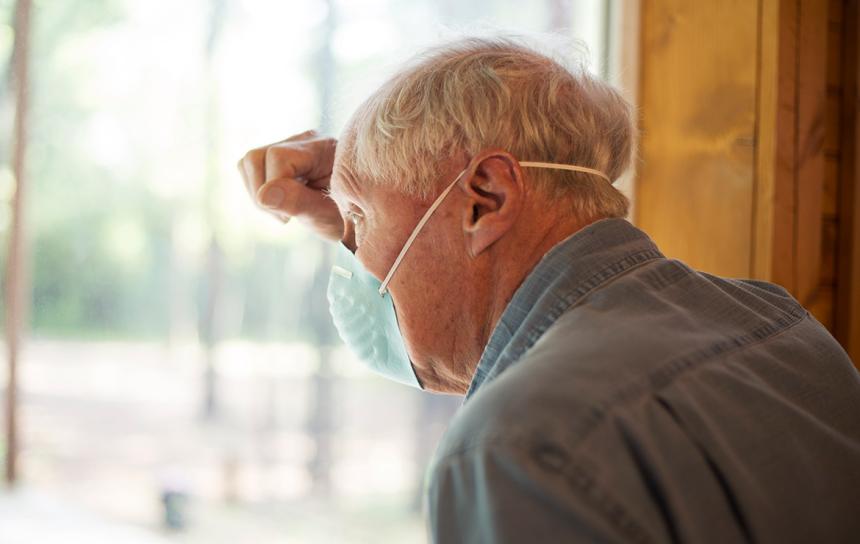Christmas May Be Bluer than Usual: Dealing with Seasonal Depression During the COVID Pandemic

If you’re like a lot of people, you’re probably relieved we’re wrapping up 2020. This past year certainly has been one for the books. COVID-19 has transformed how we socialize, work, even handle chores. Unfortunately, everything we’ve been through this year has taken a toll on our mental health. And now that we’re entering winter, many of us will have to deal with seasonal depression, commonly known as the “winter blues.” But like everything else in 2020, seasonal affective disorder will be different.
What is Seasonal Depression?
What’s seasonal affective disorder, or SAD? It is a form of episodic depression that affects people during specific times of the year, according to Psychology Today. It’s most often associated with the fall and winter months and can cause feelings of sluggishness, sadness and even hopelessness. You also might find changes in your usual sleeping patterns, energy levels and appetite. And it seems to exacerbate bipolar disease.
Researchers aren’t sure what causes seasonal depression. One theory is that bouts of major depression increase as we transition from daylight savings time to standard time. The shorter days cause distress and trigger depression, according to a study published in Epidemiology. And researchers from the National Institute for Mental Health believe that darker days throw off serotonin levels (a hormone that regulates mood and happiness), raise melatonin levels (a hormone that controls the sleep-wake cycle) and decrease vitamin D levels, which affects sleep patterns and mood.
Regardless of what initiates SAD, it affects about 10 million Americans every year. Why will 2020 be different? Because this year, SAD will be one more layer of mental health issues we must handle.
COVID and Mental Health
During the pandemic, many Americans lost loved ones, jobs and a sense of security, causing grief, stress and anxiety. Sheltering-in-place took a toll on many live-in relationships, causing even more negative emotions. And studies have found that extreme social distancing measures used during the H1N1, Ebola and SARS outbreaks can lead to short-term and long-term problems such as insomnia, emotional exhaustion and substance abuse.
MDVIP and IPSOS recently asked Americans in a survey what kinds of pandemic-related mental health issues they were experiencing:
- 64 percent of survey participants believe the pandemic triggered feelings of depression and/or anxiety.
- 58 percent found that it affected their sleep habits and 57 percent claim it has altered their mood.
- 54 percent reported a lack of interest in usual activities and 51 percent feel withdrawn from loved ones since the shutdown.
“The COVID pandemic forced many of us to live our lives virtually. These big changes and lack of socialization affected people’s mental health,” says Bernard Kaminetsky, MD, medical director, MDVIP. “As we approach the darker, colder months, I think we’re going to see more severe cases of SAD, as well as a lot of new cases.”
People typically begin feeling the effects of the shorter days just as we hit the holidays. But with COVID, gatherings with family, friends and co-workers will probably be limited in size, virtual or canceled, intensifying feelings of loneliness and isolation.
Preventing Seasonal Affective Disorder
“The sooner you recognize SAD, the sooner you can get treated for it. Typical symptoms include feeling depressed, worthless or hopeless; being tired or fatigued; struggling with irritability, a lack of focus or social withdrawal; overeating and craving carbs,” says Kaminetsky.
If you recognize these symptoms, discuss them with your primary care physician. Your doctor can provide suggestions, prescribe medication or refer you to a specialist. You can also:
- Open curtains and shades in your office and home to bring in as much light as possible.
- Try a light therapy box, a box of fluorescent lights that mimic natural outdoor lighting.
- Invest in a dawn stimulator, an alarm that wakes you with light as opposed to music or sound.
- Exercise, as it triggers the release of endorphins – chemicals that foster positive feelings. Outdoor activities are ideal to help you stave off SAD.
- Take measures to protect your mental health during the pandemic. Here’s what you need to know »
As with any mental health issue, you should talk to your physician. If you don’t have a physician, consider partnering with MDVIP. MDVIP-affiliated physicians have the time, resources and tools to help you develop a personalized wellness program that could focus on cognitive health. Find a physician near you and begin your partnership in health »


